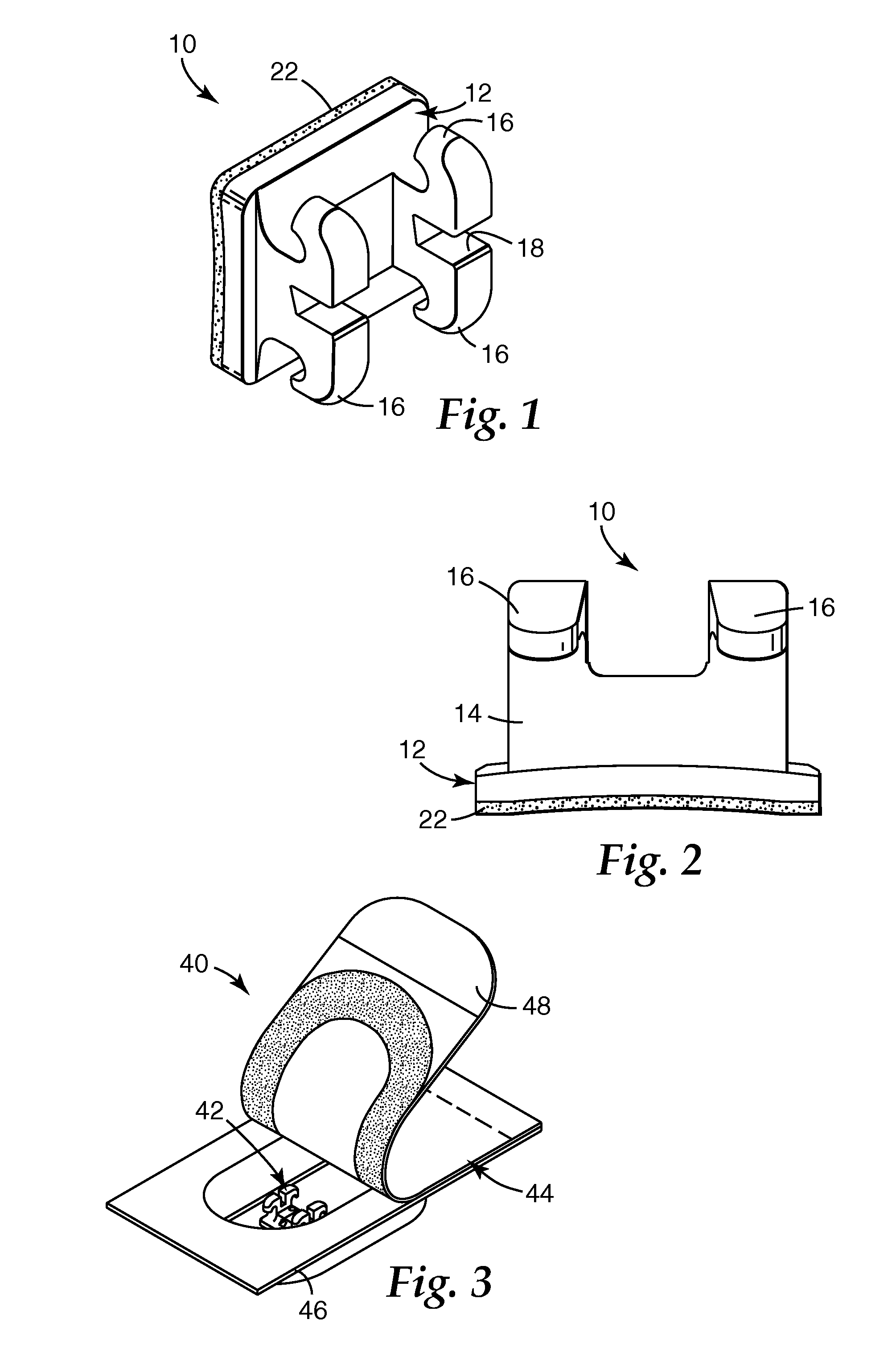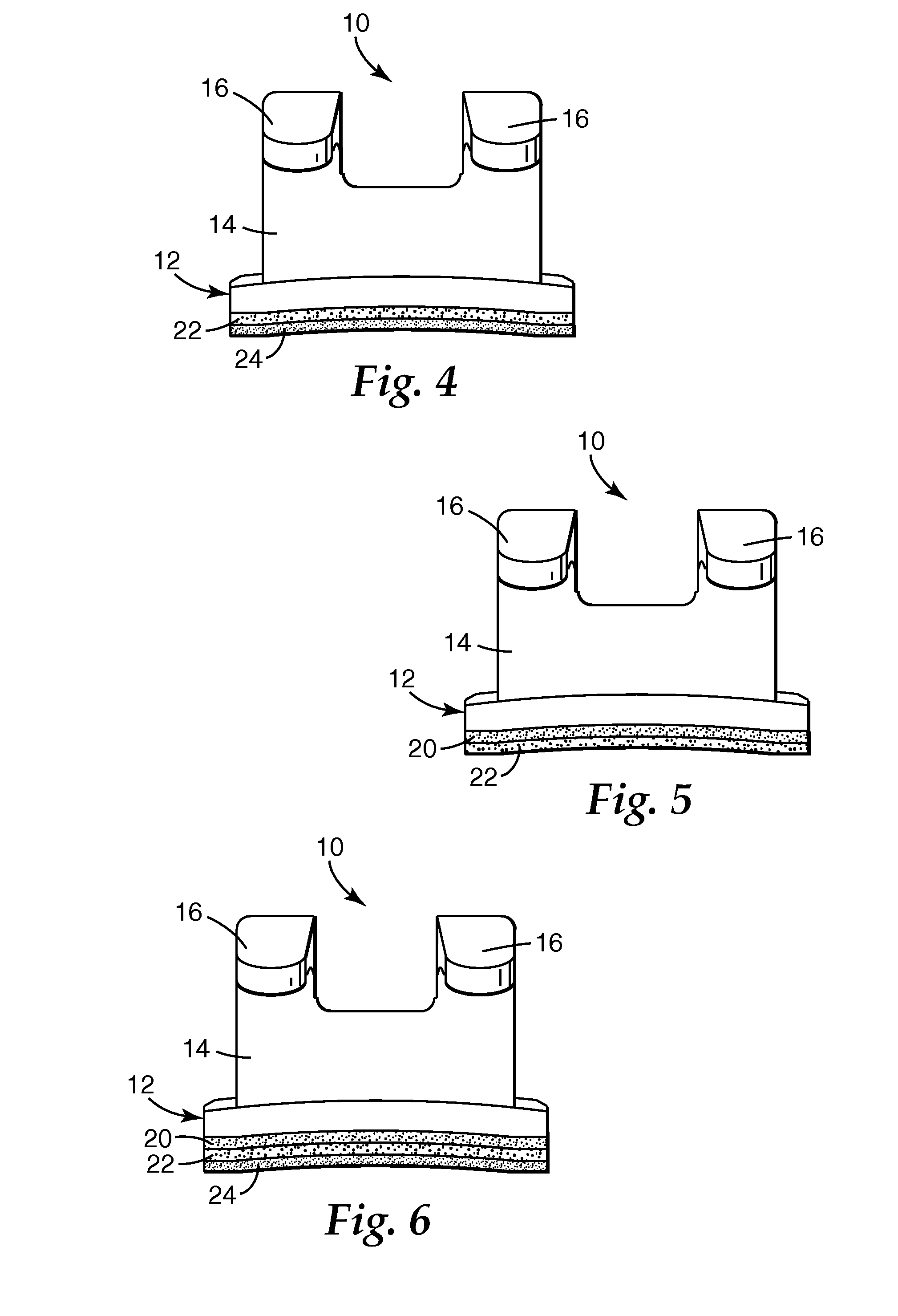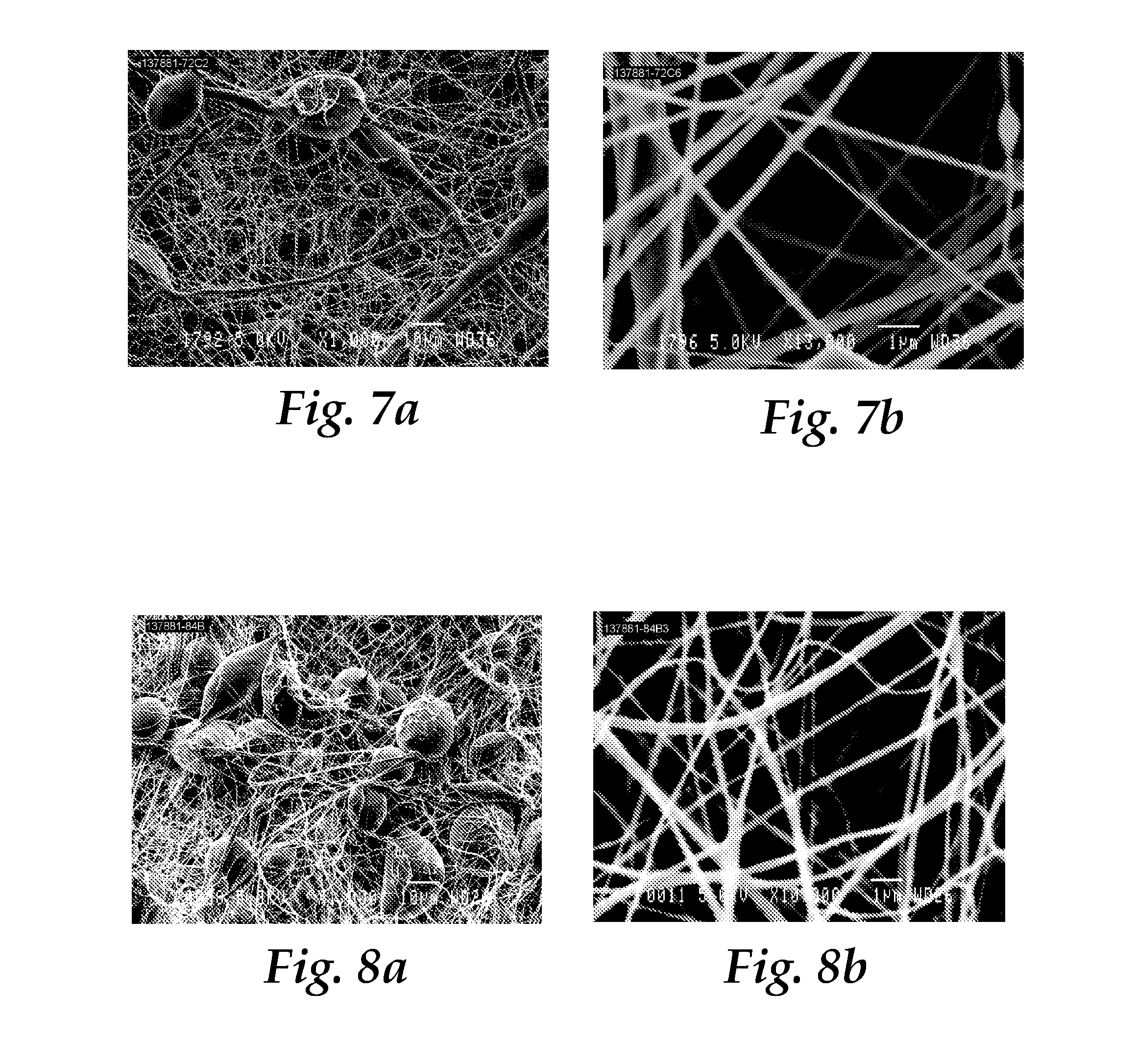Dental compositions including thermally responsive additives, and the use thereof
a technology of additives and dental compositions, applied in the field of dental compositions including thermally responsive additives, can solve the problems of cohesive failure and adhesion failure within the hardened dental composition, and achieve the effects of reducing the bond strength of orthodontic appliances, sufficient bond strength, and reducing the bond strength
- Summary
- Abstract
- Description
- Claims
- Application Information
AI Technical Summary
Benefits of technology
Problems solved by technology
Method used
Image
Examples
example 11
Primer Composition
[0209] Example 11 was prepared by finely grinding the thermoplastic additive TONE P767 with a mortar and pestle and adding the resulting fine powder (40% by weight) into the commercial product TRANSBOND PLUS Self Etching Primer (3M Unitek).
examples 12-15
and
Comparative Example 3 (CE-3) Primer Compositions
[0210] Examples 12-15 were prepared by adding the thermoplastic additive TONE P767 into the commercial product SINGLE BOND / TRANSBOND MIP Moisture Insensitive Primer (3M Unitek). The additive was added to the Primer at levels of 0 wt.-% (Comparative Example 3), 5 wt.-% (Example 12), 10 wt.-% (Example 13), 15 wt.-% (Example 14), and 20 wt.-% (Example 15).
example 16
Adhesive Composition
[0211] Example 16 was prepared by mixing TONE P767 (30.5%) with Filler D (29.7%) and Resin B (39.8%). Thermal data was collected for a photocured (Model 2500 dental halogen lamp from 3M ESPE for 20 seconds) sample of Example 16 that had been heated, quenched in liquid nitrogen and then reheated. Two melt temperatures (Tm) were observed (54.24° C. and 57.70° C.), a result attributed most likely to the formation of two crystalline populations. Reheating and cooling gave rise to entirely reversible behavior.
Evaluations of Bond Strengths for Examples 1-9 and 12-15
Debonding of Brackets from Test Surfaces
[0212] Examples 12-15 (SINGLE BOND / TRANSBOND MIP Moisture Insensitive Primer containing various levels of TONE P767) were evaluated for shear bond strength using the Shear Bond Strength on Glass Test Method A described herein (with VICTORY Series metal brackets and photocured with a Model 5560 dental lamp). Heating was achieved by placing the samples in a conventio...
PUM
| Property | Measurement | Unit |
|---|---|---|
| bond strength | aaaaa | aaaaa |
| temperature | aaaaa | aaaaa |
| temperature | aaaaa | aaaaa |
Abstract
Description
Claims
Application Information
 Login to View More
Login to View More - R&D
- Intellectual Property
- Life Sciences
- Materials
- Tech Scout
- Unparalleled Data Quality
- Higher Quality Content
- 60% Fewer Hallucinations
Browse by: Latest US Patents, China's latest patents, Technical Efficacy Thesaurus, Application Domain, Technology Topic, Popular Technical Reports.
© 2025 PatSnap. All rights reserved.Legal|Privacy policy|Modern Slavery Act Transparency Statement|Sitemap|About US| Contact US: help@patsnap.com



